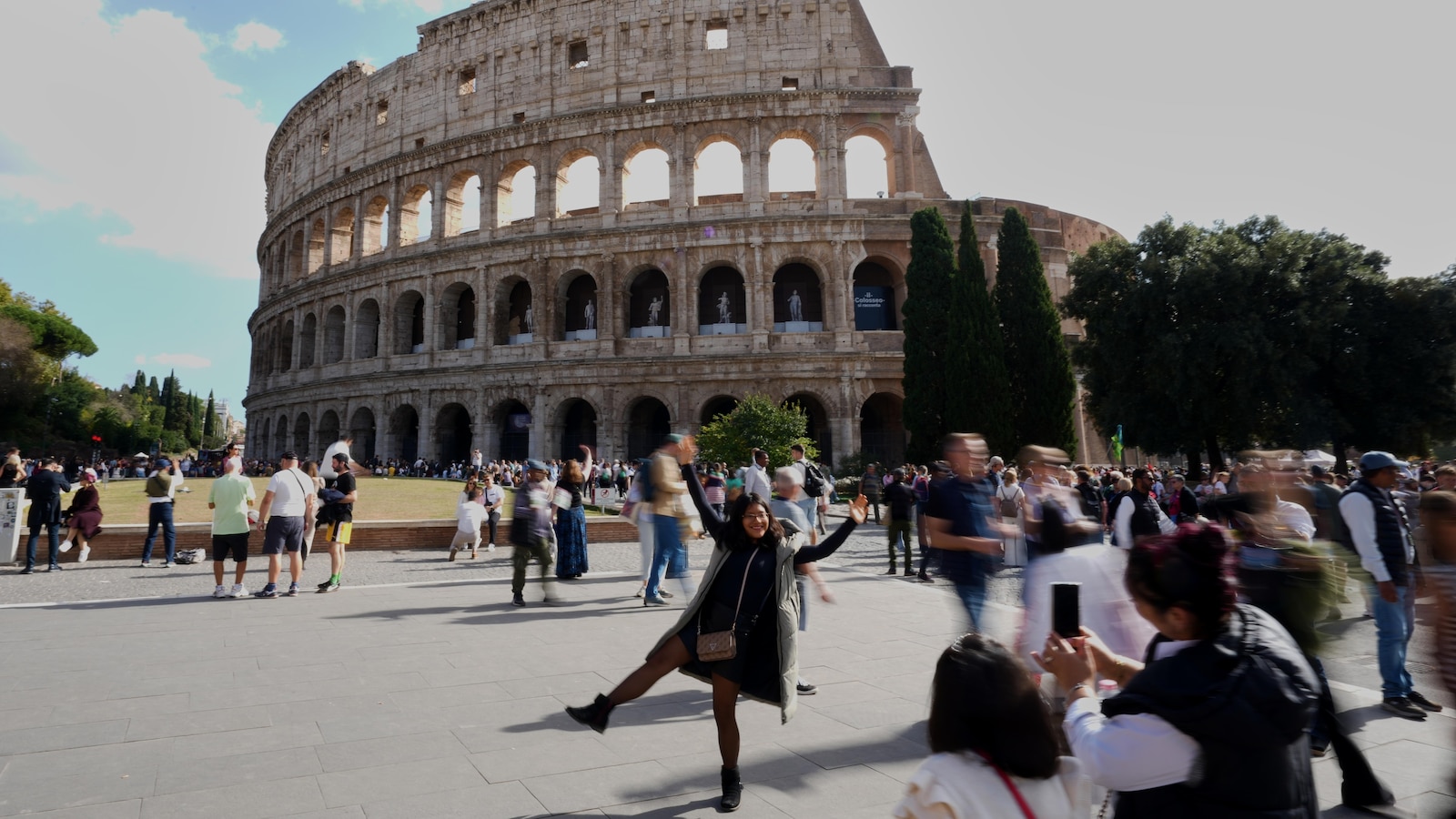ROME — The man who has just taken over Rome’s main tourist attraction wants to set the record straight: the Colosseum will not host any electronic music parties during his tenure.
Simone Quilici, director of the Colosseum Archaeological Park, shared her plan to bring concerts to the nearly 2,000-year-old amphitheater in an interview with an Italian newspaper earlier this month, and social media proceeded to do what it too often does. The “mass raves” were huge, with multiple tales trumpeted alongside AI-generated images of multicolored rays of light shooting from the sand into the sky.
Quilici told The Associated Press that he heard complaints from archaeologists and ordinary Romans, dismayed at the possibility that their cultural heritage would be so desecrated. Even electronic music fans expressed concern online about the damage that strong bass could inflict on an ancient structure that continues to produce new wonders, like that one. Emperor’s secret passage that opens on October 27..
The concerts must respect the Colosseum as a “sacred space,” Quilici said, as it is an integral part of Roman identity and has taken on religious significance. Today it is the site of the Via Crucis procession during Holy Week. traditionally predicted by the Pope.
“Music must be carefully controlled. I mentioned certain artists, not by chance, who have not been ‘rock’ for some time, who play calm music and attract a calm audience, because the important thing is that it is not a wild crowd,” Quilici, 55, said Friday in his first interview with foreign media since taking office on October 20. said.”
Concerts can be acoustic or jazz, he said, using Sting as an example. The amphitheater could host poetry readings, dance performances and theater productions once the The small existing platform is expanded.. Also in the plans: historical recreations of gladiatorial battles based on academic research.
“There are people who have a great knowledge about daily life in past eras, with a remarkable level of scientific precision. That is why these activities are very welcome within the Colosseum park,” Quilici said. He stressed that such performances would be the antithesis of the poorly dressed centurions who besiege the Colosseum at night, posing for photographs with tourists and then harassing them for payment.
The first concerts and performances at the Coliseum will take place in no less than two years, he added.
Only a handful of concerts have been held at the Coliseum over the years, including those by Ray Charles in 2002, Paul McCartney in 2003 and Andrea Bocelli in 2009. All were billed as special events and spectator numbers were strictly restricted.
“Unfortunately, as everyone knows, tourism is a commercial activity, an industry that does not always connect with culture,” he said at the Colosseum. upper balcony. “Incorporating cultural activities into the mix would enrich this place, making it not only a place to visit, but also a place where one can experience and enjoy artistic events.”
Looking at the ruins of the arena from above, the bustle of tourists is reminiscent of the cross section of an anthill. The Colosseum received nearly 9 million visitors last year, up from 7 million the year before, according to data provided by the park.
Even in October, outside of the peak summer tourist season, the place was packed.
That’s partly because of that. Vatican Jubilee Yearwhich is celebrated once every quarter of a century and continues to attract large groups of pilgrims. It’s also because the Colosseum is one of two must-see places for short-stay tourists, along with Vatican City, and “it’s already at capacity,” Quilici said.
Therein lies the other great ambition of his mandate: to induce tourists to go to other places.
The park he oversees includes not only the Colosseum, but also other directly adjacent sites like it. Roman Forumwhich was the heart of the ancient city’s society, and the Palatine Hill, where Rome was founded and the emperor’s palace is found.
Tickets with a duration of 24 hours include all three destinations. Still, a third of shoppers visit just the Colosseum, according to park data. If Rome is an open-air museum, as they say, it’s like catching a glimpse of Leonardo da Vinci’s “Mona Lisa” in the crowd at the Louvre and then leaving without even looking at the other masterpieces in the room.
“Last year, tourists in Rome did not stay just two and a half days; their visits increased to four days. Therefore, there is also the opportunity to use the Colosseum as a starting point to explore less visited places,” he said.
Likewise, relatively few visitors come to the nearby Circus Maximusthe sprawling grounds of Rome’s high-adrenaline chariot races, depicted in the 1959 film “Ben-Hur.” The Appian Way, known as “the queen of roads”, goes even more unnoticed, despite become a UNESCO world heritage site last year. Its giant cobblestones provide passage to a golden countryside that evokes centuries past and provides a welcome respite from the tourist-crowded center of Rome.
Both the Circus Maximus and the Apio Park, which Quilici managed before the Colosseum, are free to visit.
All of these sites and more are close to each otheralthough somewhat disjointed: archaeological islands mostly divided into sections by busy roads. Quilici hopes to create new access points to his park, as well as connections with others to better manage crowds and establish a consolidated area for exploration and discovery.
“It’s a collective effort, requiring the cooperation of all the different administrations,” he said. “However, it is more a question of management than infrastructure costs. Options that can sometimes be simple decisions such as limiting traffic, which do not necessarily involve large expenses, but rather a brave decision to bring life back to the heart of the city of Rome.”
